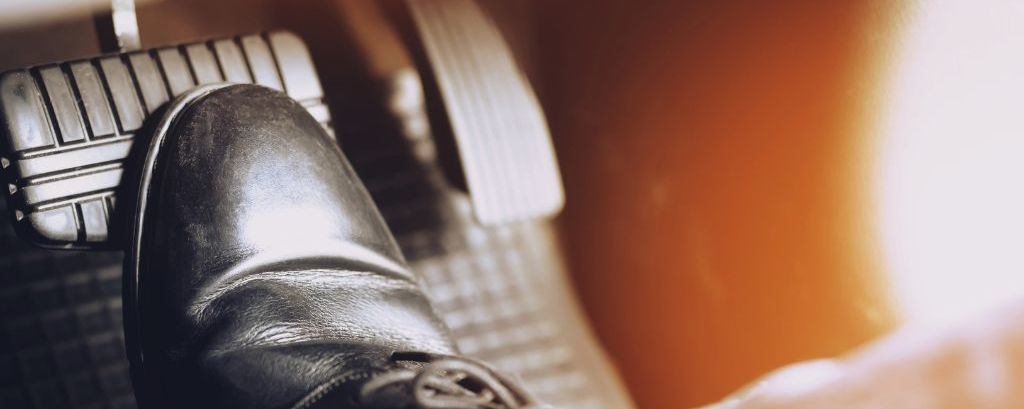Braking - Learning to Drive
Posted on 16th February 2024 at 12:53
When learning to drive, mastering the art of braking is as crucial as steering or accelerating. Braking isn't just about stopping the car; it's about controlling the vehicle's speed in a way that ensures safety, efficiency, and comfort. This article delves into the nuances of braking, from anticipation to the mechanics of braking, including the use of Anti-lock Braking Systems (ABS).
Braking:
Anticipation:
Anticipation is the foresight of potential hazards before they occur. It involves continuously scanning the road ahead, the behaviour of other road users, and changing road conditions. By anticipating, a driver can adjust speed appropriately without the need for sudden braking, which not only conserves momentum but also reduces wear on the brakes.
Braking and Steering:
Effective braking is closely linked with proper steering. The general rule is to avoid braking while steering, especially on bends. Braking on a bend can lead to loss of control because the car's weight shifts forward, reducing rear tyre grip. Instead, it's advisable to slow down before a turn, using the brakes gently and progressively, then navigating the bend at a steady speed.
Avoid Braking on Bends:
To maintain control and stability, decelerate before you reach a bend. This can be achieved by lifting off the accelerator early and braking gently if necessary. Once you're at a safe speed, you can then navigate the turn without additional braking. This approach not only keeps the car stable but also conserves fuel.
Think Ahead:
Thinking ahead involves planning your actions in advance. It encompasses everything from adjusting your speed before reaching a bend to preparing for stops at traffic lights. This proactive approach minimises the need for sudden stops, reducing the risk of rear-end collisions and improving the overall flow of traffic.
Five Rules for Good Braking:
1. Brake Gently and Progressively:
Start with light pressure on the brake pedal and gradually increase it. This allows for a smoother stop and gives following drivers more time to react.
2. Use the Brake and Clutch Correctly:
Generally, brake before you clutch. Depress the clutch just before the car stops to prevent stalling.
3. Check Mirrors Regularly:
Failure to do so can lead to failing your driving test. Mirrors give you a clear picture of the traffic situation around you, allowing for safer braking decisions.
Find out more about use of mirrors in our blog: Using Mirrors - Learning to Drive
4. Understand the Basics of Braking:
Knowing how your car's braking system works, including ABS, can enhance your braking technique.
5. Remember Braking Distances:
Braking distance increases exponentially with speed. A useful method to remember this is the two-second rule in dry conditions, extending to at least four seconds in wet conditions. In icy conditions it is 10 times the amount.

Defensive Driving:
Defensive driving is about being prepared for the unexpected. It includes maintaining a safe distance from the vehicle in front, anticipating the actions of other drivers, and being ready to brake or manoeuvre safely when needed.
Stopping:
Stopping smoothly involves gentle, progressive braking. Ensure you stop before the stop line at junctions, making complete stops at stop signs and always checking your mirrors before slowing down.
Progressive Braking:
Progressive braking means gradually increasing and then decreasing brake pressure. This technique allows for a smoother stop, minimises wear on the braking system, and is more comfortable for passengers.
ABS:
Anti-lock Braking Systems (ABS) prevent the wheels from locking up during heavy braking, allowing the driver to maintain steering control. While ABS is a valuable safety feature, it doesn't substitute for good braking practices. Understanding how ABS works and when it activates can help drivers use it effectively.
Braking FAQ's
How do you brake gently when driving?
Start with a slight pressure on the brake pedal and gradually increase it as needed. Lift off the accelerator early to use the car's natural deceleration as much as possible.
What is the correct method of braking the car?
The correct method is progressive braking: applying pressure gradually, then easing off as the car slows down, using the clutch just before stopping to avoid stalling.
Do you brake or clutch first?
Brake first to utilise the engine's braking power, then depress the clutch close to the stop to prevent the engine from stalling.
Can you fail a driving test for not looking in mirrors enough?
Yes, failing to use mirrors correctly can result in faults, potentially leading to a test fail.
What are the basics of braking?
The basics include understanding your vehicle's braking system, braking gently and progressively, and knowing how to use ABS effectively.
How do you remember braking distance?
Use the two-second rule for dry conditions and at least double this distance in wet, and 10 times the amount in icy conditions. Remember, stopping distances increase exponentially with speed.
In conclusion, mastering the art of braking is a fundamental aspect of learning to drive that goes beyond mere technique. It encompasses a comprehensive understanding of anticipation, vehicle control, and defensive driving principles.
Effective braking is not just about stopping the car; it's about doing so in a way that ensures safety, efficiency, and comfort for all road users. By adhering to the five rules for good braking, utilising progressive braking techniques, and understanding the role of ABS in modern vehicles, learner drivers can significantly enhance their driving skills.
Remember, good braking habits not only contribute to passing the driving test but also lay the foundation for a lifetime of safe driving. Therefore, practice, patience, and a proactive approach to learning and applying these principles are key to becoming a proficient and responsible driver.
For more help and support, join our online theory test course today to get ready for success.




Share this post:




